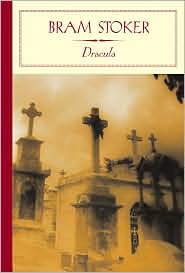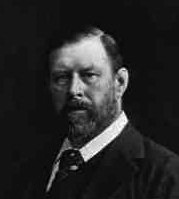“This night our feet must tread in thorny paths or later and forever the feet you love must walk in flame.”
Writ ten in 1897, Bram Stoker’s Dracula is a classic of British fiction, fascinating for its subject matter and still the subject of films a hundred years later. Count Dracula, the epitome of evil, is exotic enough to keep even the most jaded reader of his exploits interested in their outcome, and grounded enough in the reality of evil to make even doubters wonder whether evil can be transmitted from one person to another against one’s will.
ten in 1897, Bram Stoker’s Dracula is a classic of British fiction, fascinating for its subject matter and still the subject of films a hundred years later. Count Dracula, the epitome of evil, is exotic enough to keep even the most jaded reader of his exploits interested in their outcome, and grounded enough in the reality of evil to make even doubters wonder whether evil can be transmitted from one person to another against one’s will.
The novel begins with the arrival of Jonathan Harker, a lawyer representing a London real estate agency, at the Transylvanian castle of Count Dracula to clinch the deal by which the count will move to a British estate. Details about Harker’s arrival by coach, his greeting at the castle, which has no doors except the front door, his reception by the count (who has hair on the palms of his hands), and his instructions regarding where he may go or not go within the castle set the tone and establish the mysterious background of the count and a sense of dread regarding the outcome for Harker.

By the time that Harker recovers from a long and mysterious illness and returns home, the count, already in London, has turned Lucy, a lovely ingenue, into a vampire. Dr. Van Helsing, a German expert on vampires hired by her family, saves her several times from what appears to be severe anemia and recommends ringing her room with garlic and making sure that she has crucifixes around her. When Dracula then turns his blood-thirsty attention to Mina, fiancée of Jonathan Harker and friend of the unfortunate Lucy, the scene is set for a showdown regarding Dracula’s power vs. the power of goodness and traditional religion.
Stoker takes his story beyond sheer melodrama, eliciting sympathy for the afflicted victims of Dracula while also recreating the religious atmosphere of the period and the beliefs and doubts of average citizens. The novel is far more compelling than I expected, creating suspense at the same time that it develops the character of the count with his supernatural powers. The climax in which the forces of good are ranged against the forces of evil in the shape of the count, whose long history is detailed in the novel, is truly a conflict between traditional religion and evil in the form of Satan personified. Fun to read and surprisingly affecting.
